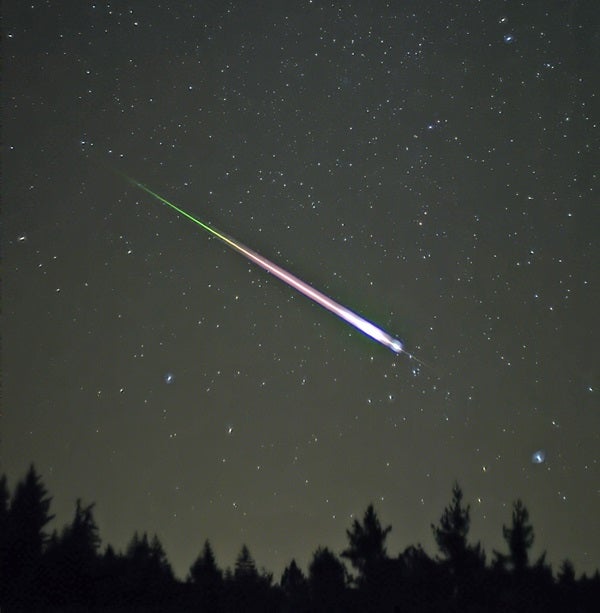The Leonid meteor shower will reach its peak the morning of November 17. Although typically one of the year’s finest meteor showers, this year’s Leonid display suffers because it comes just three days after the closest Full Moon in nearly 70 years. On the 17th, a nearly 90-percent-lit Moon shares the morning sky with the shower, drowning out the fainter “shooting stars” and rendering the bright ones less impressive.
Leonid meteors appear to radiate from a point in the constellation Leo the Lion (hence the shower’s name). This star group rises in late evening and climbs high in the southeast by the time twilight starts to paint the sky. In a normal year, observers can expect to see an average of up to 15 meteors per hour under a dark sky. The Moon will cut this number significantly, probably to around five an hour.
Still, the shower is worth watching because the meteors blaze into the atmosphere at 44 miles per second, the fastest of any shower meteors. The high speeds mean they produce a greater percentage of fireballs — meteors at least as bright as the brilliant planet Venus — than most showers.
Leonid meteors begin their lives as part of a comet known as 55P/Tempel-Tuttle. This comet returns to the inner solar system every 33 years. Each time it approaches the Sun, our star’s heat warms the icy nucleus, turning the ice to gas and releasing trapped dust particles in the process. The dust spreads out along the comet’s orbit, and every November Earth runs into this stream. As the dust particles slam into our planet’s upper atmosphere, they burn up from friction to create the flashes of light we see in the sky.










